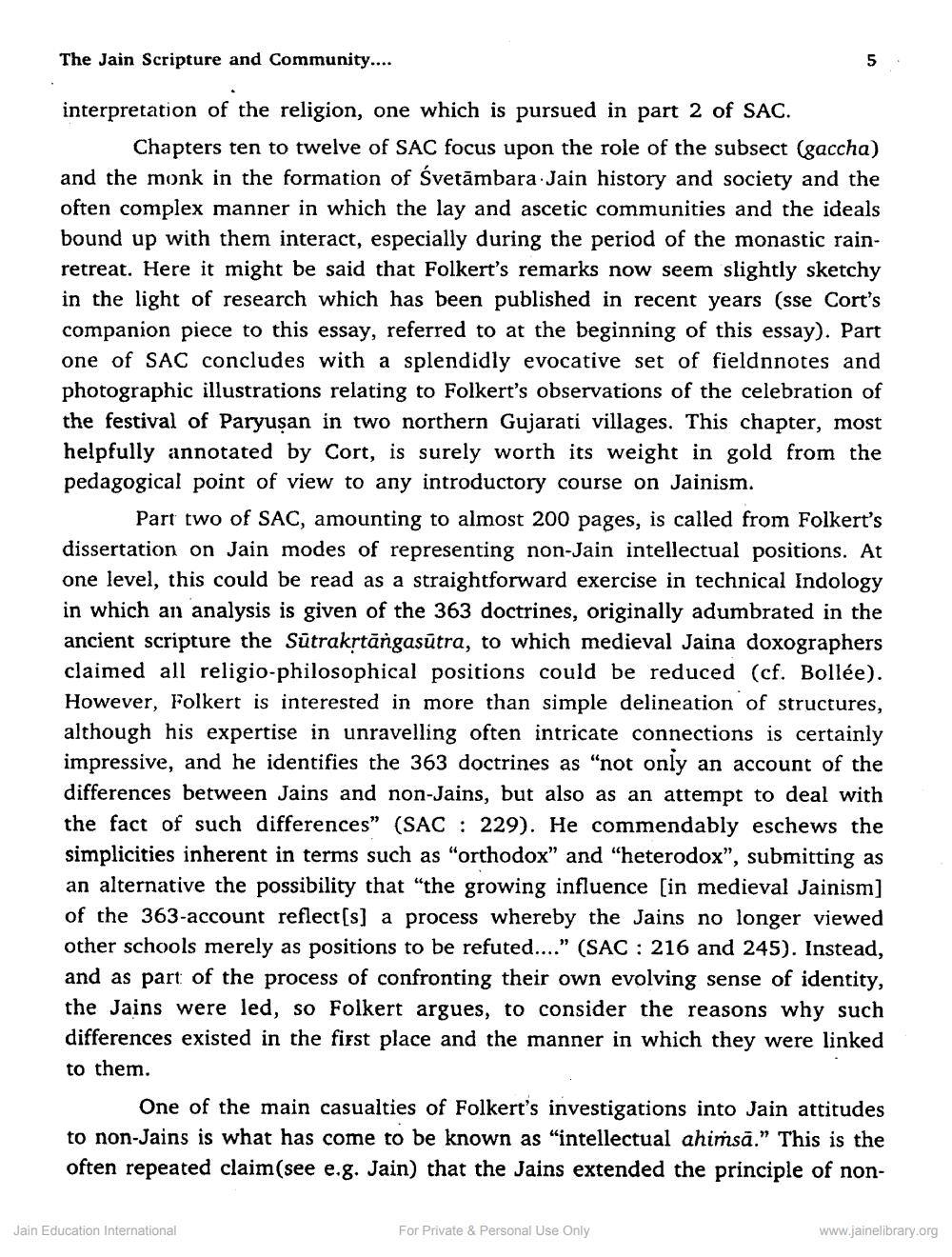________________
The Jain Scripture and Community....
5
.
interpretation of the religion, one which is pursued in part 2 of SAC.
Chapters ten to twelve of SAC focus upon the role of the subsect (gaccha) and the monk in the formation of Svetămbara Jain history and society and the often complex manner in which the lay and ascetic communities and the ideals bound up with them interact, especially during the period of the monastic rainretreat. Here it might be said that Folkert's remarks now seem slightly sketchy in the light of research which has been published in recent years (sse Cort's companion piece to this essay, referred to at the beginning of this essay). Part one of SAC concludes with a splendidly evocative set of fieldnnotes and photographic illustrations relating to Folkert's observations of the celebration of the festival of Paryusan in two northern Gujarati villages. This chapter, most helpfully annotated by Cort, is surely worth its weight in gold from the pedagogical point of view to any introductory course on Jainism.
Part two of SAC, amounting to almost 200 pages, is called from Folkert's dissertation on Jain modes of representing non-Jain intellectual positions. At one level, this could be read as a straightforward exercise in technical Indology in which an analysis is given of the 363 doctrines, originally adumbrated in the ancient scripture the Sūtrakstāngasūtra, to which medieval Jaina doxographers claimed all religio-philosophical positions could be reduced (cf. Bollée). However, Folkert is interested in more than simple delineation of structures, although his expertise in unravelling often intricate connections is certainly impressive, and he identifies the 363 doctrines as "not an account of the differences between Jains and non-Jains, but also as an attempt to deal with the fact of such differences" (SAC : 229). He commendably eschews the simplicities inherent in terms such as "orthodox" and "heterodox”, submitting as an alternative the possibility that "the growing influence (in medieval Jainism] of the 363-account reflect [s] a process whereby the Jains no longer viewed other schools merely as positions to be refuted...." (SAC : 216 and 245). Instead, and as part of the process of confronting their own evolving sense of identity, the Jains were led, so Folkert argues, to consider the reasons why such differences existed in the first place and the manner in which they were linked to them.
One of the main casualties of Folkert's investigations into Jain attitudes to non-Jains is what has come to be known as "intellectual ahimsā.” This is the often repeated claim(see e.g. Jain) that the Jains extended the principle of non
Jain Education International
For Private & Personal Use Only
www.jainelibrary.org




